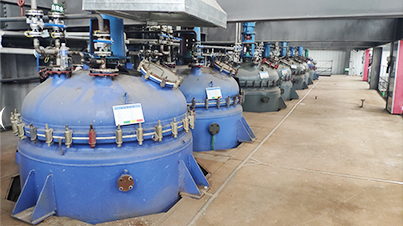Exploring the Properties and Applications of Polyacrylamide in Various Industries
Exploring Polyacrylamide A Versatile Polymer with Numerous Applications
Polyacrylamide (PAM) is a synthetic polymer derived from acrylamide monomers. Due to its unique properties, it has emerged as an essential material in various sectors, including agriculture, water treatment, and the pharmaceutical industry. This article explores the characteristics, synthesis, and multifaceted applications of polyacrylamide, highlighting its significance in modern science and industry.
Properties and Characteristics
Polyacrylamide is known for its high molecular weight, which contributes to its excellent solubility in water and its ability to form gel-like substances. These characteristics are primarily due to the polymer's repeating units of acrylamide, which can be cross-linked to enhance its structure and functionality. Depending on the degree of cross-linking, polyacrylamide can exist in various forms, including linear, cross-linked, and non-ionic or ionic varieties, each tailored for specific applications.
One of the most notable properties of PAM is its ability to increase viscosity in aqueous solutions. This feature makes it suitable as a thickening agent or stabilizer in various products. Additionally, polyacrylamide exhibits excellent flocculation properties, which enable it to aggregate fine particles suspended in liquids, thus aiding in the process of sedimentation.
Synthesis of Polyacrylamide
The polymerization of acrylamide to form polyacrylamide can be achieved through various chemical processes, including free-radical polymerization. This process typically occurs in an aqueous solution and can be initiated using heat, light, or chemical initiators. The resulting polymer may undergo further modification to enhance its properties, such as incorporating charged groups to produce anionic or cationic variants of polyacrylamide. These modifications expand its applicability across different industries.
Applications of Polyacrylamide
poly acrylic amide

1. Water Treatment One of the primary applications of polyacrylamide is in water treatment processes. PAM is widely used as a flocculant to clarify water by aggregating and settling particulate matter. This application is crucial in municipal water supply systems, wastewater treatment, and the paper industry, where clear, clean water is essential for both public health and production efficiency.
2. Agriculture In agriculture, polyacrylamide plays a vital role in soil stabilization and erosion control. When applied to soil, PAM helps retain moisture, reduce erosion, and improve soil structure. This leads to better water retention and nutrient availability, promoting healthier crop growth and sustainability in farming practices.
3. Pharmaceuticals and Biomedical Applications Polyacrylamide's biocompatibility has opened doors to its use in the biomedical field. It is utilized in drug delivery systems, tissue engineering, and as a medium for electrophoresis. In these applications, PAM provides a controlled environment for the release of drugs and supports cell growth and differentiation.
4. Cosmetics and Personal Care The cosmetic industry has also embraced polyacrylamide for its thickening and emulsifying properties. It is found in creams, lotions, and gels to enhance texture and stability. Moreover, PAM's ability to hold water enhances the hydration levels of skin products, making them more effective in skincare routines.
5. Oil and Gas Industry In the oil and gas sector, polyacrylamide is employed in enhanced oil recovery techniques. By increasing viscosity and promoting better mobility of oil, PAM facilitates the extraction process, leading to higher production rates. Additionally, it is used in hydraulic fracturing fluids to improve efficiency in extracting oil and gas reserves.
Conclusion
Polyacrylamide stands out as a versatile polymer with a wide range of applications across various industries. Its unique properties, such as water solubility, viscosity enhancement, and flocculation ability, make it an invaluable resource. As research continues to evolve, further innovations in polyacrylamide applications are anticipated, paving the way for improved technologies and practices that can benefit society at large. Whether in water treatment, agriculture, or pharmaceuticals, the importance of polyacrylamide cannot be overstated, and its impact is likely to grow in the coming years.
-
Water Treatment with Flocculant Water TreatmentNewsJun.12,2025
-
Polymaleic AnhydrideNewsJun.12,2025
-
Polyaspartic AcidNewsJun.12,2025
-
Enhance Industrial Processes with IsothiazolinonesNewsJun.12,2025
-
Enhance Industrial Processes with PBTCA SolutionsNewsJun.12,2025
-
Dodecyldimethylbenzylammonium Chloride SolutionsNewsJun.12,2025





